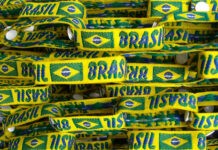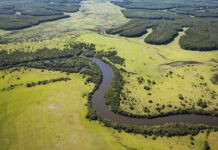Desired product properties primarily determine the tissue fibre furnishes, but there is space to optimise the fibre selection
HIGH FIBRE COST
Fibre costs account for some 60% of the tissue base paper costs and roughly some 40% of finished product costs (toilet tissue). These percentages depend greatly on the fibre furnish and the phase on the pulp price cycle. Fibre is, however, the single most important cost item in tissue and even small changes in fibre costs have a significant impact on total tissue costs. Fibre price level is also a key driver for the financial results of the tissue companies as the raw material prices reflect much slower off the final product prices than in the case of many other paper products. This relatively slow and poor correlation of final product prices and raw material prices sometimes also works in the favour of tissue companies. A good example is the recessionary year 2009 that was, due to low pulp prices, financially exceptionally good for almost all tissue producers.
Fibre prices are cyclical commodity prices that can’t be significantly impacted on by individual buyers, but is there anything tissue producers can do to reduce their fibre costs?
MEANS TO REDUCE FIBRE COSTS
Broke from converting processes is typically recovered and normally there are no significant fibre losses from the system. Unless the broke recovery is missing, a reduction of losses offers no major opportunity to reach lower fibre costs.
There is some potential to improve fibre sourcing and purchasing and consequently costs by carefully focusing not only on discounts and rebates but also on logistic costs, inventory management, sales and payment terms i.e ‘the total cost of ownership’.
For most tissue producers, however, there is significant potential in optimisation of the fibre furnish. With a proper choice of fibre, pulp preparation and paper making processes, cost savings can be reached maintaining the same product quality.
DESIRED PRODUCT PROPERTIES DETERMINE THE BASIC FIBRE FURNISH
In product categories where softness is the most important property (such as toilet paper and facials/hankies), BHKP (Bleached Hardwood Kraft Pulp), and especially BEKP (Bleached Eucalyptus Kraft Pulp) is the preferred fibre.
When absorbency is targeted, like in (kitchen) towels and napkins; BSKP (Bleached Softwood Kraft Pulp) share needs to be clearly higher. Best absorption properties are given by southern softwood fibre (just as in fluff pulps).
In facials and hankies the low basis weight limits the fibre choice. Even if the softness of BEKP fibre is a desired property, for runnability reasons the strength of the sheet is increased with a higher BSKP share, often compromising the quality. Facial machines are often fast and producers strive for full usage of the speed potential and for high efficiency at the same time.
The best facials by the leading global brands are based on very high quality NBSKP (Northern Bleached Softwood Kraft Pulp), for instance Canadian Black Spruce, which is used to form a net on top of which Brazilian BEKP is layered. This ‘Ultra’ quality is often processed with TAD (Through Air Dryer) machines and provides a so called tactile softness that feels just as soft as cotton.
The best AfH (Away-from-Home) facials, (which can also be produced with TAD), possess almost the same softness and absorbency. Here the share of BEKP is 70- 80% of the fibre furnish.
Standard facials contain other fibres, even sometimes suitable recovered fibre, final SW (softwood) content is high and the quality and softness is compromised on high productivity.
Napkins need some absorbency and stiffness rather than softness and the softwood share tends to be higher than for instance for facials. Deep coloured napkins (web colouring) have very high softwood content, often 100%, as due to the colour retention HW (hardwood) furnish would increase the colour costs significantly.
In addition to the basic desired properties in a category the fibre furnish depends on quality tier, market segment, geography and local preferences, availability of fibre and very much on economy.
 Product properties determine the fibre furnish
Product properties determine the fibre furnishRECOVERED FIBRE IS USED TO ACHIEVE LOWER FIBRE COSTS
Recovered fibre is suited best for toilet paper and towels and is not much used in hankies or napkins.
To a lesser extent, and only in certain regions, the recovered fibre is an ecologic preference but mostly there are economic drivers to use it in search for a cheaper furnish in lower quality or AfH products.
The best recovered fibre-based producers reach a quality where the recycled content is imperceptible. Especially for those best quality grades the economic benefits have recently been more and more challenging to reach.
The weakening availability (declining demand of graphic papers that are suitable recovered paper grades for tissue) and consequently increasing prices will slow down the growth of recovered fibre usage in tissue.
BSKP AND BHKP PRICE GAP
The best opportunity to reduce and optimise fibre costs in virgin fibre-based tissue is to increase the share of hardwood component in the furnish. The usage of BHKP has already been increasing for some time due to quality issues and special suitability of BEKP for tissue, but also due to the price differential between BHKP and BSKP.
Falling real prices for pulp demonstrate the impact of economies-of-scale on costs and, eventually, on the prices themselves. As clearly more HW than SW pulp production has moved to low-cost regions and a mill-size has grown more in BHKP than in BSKP, the price gap between the grades has widened. Trend price gap will continue to widen towards/over 100 USD/tonnes by 2020.
The price gap between BSKP and BHKP through the early part of 2011 grew to a very 0high 200 USD/tonne in Europe. The gap has recently moderated but at 100 USD/tonne in March 2012, it was still above long-term average of about 60 USD/tonne. In Asia, the price gap is clearly smaller and at 75 USD/tonne not far from average. In 2012- 2016, we project the gap in Europe to average at/above 100 USD/tonne, but narrowing in 2016 after large BHKP expansions have been absorbed.
USD/EUR exchange rate has become an increasingly important price determinant. The interrelationship between pulp prices and exchange rates has considerably strengthened. Correlation to USD is slightly higher with BSKP than with BHKP and therefore especially 2011 with relatively weak USD, the price gap widened. The crucial question is: Will the correlation remain equally high if/when USD strengthens further, as expected, in 2012-2014?
Depending on the exchange rate and pulp price developments and consequently the gap value, the price differential has an impact of some 8-12 EUR/t tissue if the BHKP share increases some 10% (the increase can also be much higher).
An equally important economic driver addressable to the furnish optimisation is also the refining energy saving as the BHKP component does not need to be refined. Higher HW share also improves formation and improved formation increases dry content before the Yankee resulting in savings in drying energy.
How high can the BHKP share be? The maximum BEKP share is 100 % even if this level is not really practical or realistic with modern high speed machines. However, in Asia, especially if the producers have fibre integration or are market pulp producers, the HW content is typically very high. Toilet paper is a different product from ours; white, bulky and very soft but with less strength and stiffness. Low speed machines can run these extreme furnishes easier as well as producers that do not creep very much, but even in China the modern fast machines are realistically planned with high but not quite extreme BEKP contents.
Savings in the furnish can also be achieved without compromising/changing the quality. Very high quality soft paper can be produced with the right choice of fibre components and proper pulp processing and paper making processes.
Pöyry has been involved in optimising refiner systems for combined targets of paper quality improvements, furnish, energy and chemical savings. The optimising typically focuses on choice and proper handling of the BSKP component as the BEKP is often used unrefined.
It is important to supply the tissue machine with uniform fibre quality in order to deliver uniform product quality. To maintain uniform quality and for better control of the refining process it is recommendable to separate the broke treatment and run SW refining pure focused on SW fibres. Often broke and recovered stock is refined together with SW fibres and in that case it is difficult or impossible to maintain stable refining conditions for the SW fibres. The refining on broke pulp and recovered stock, that is already refined once, creates fines. In mills which have the possibility to refine the SW separately the optimal tissue characteristics can better be obtained.
Also we recommend that the SW pulp is refined in high consistency allowing a fibre pad to form between the segments helping to avoid contact between the segments. Consequently the pulp processes more evenly and the capacity is higher in the refiner. Better energy efficiency as well as less cutting of fibres and less fines are achieved. The improved utilisation of the fibre properties will reduce the demand of SW for tensile strength and improve the formation due to allowing higher HW share. Additionally due to less cutting there will be less fines in the approach system of the PM.
These and similar optimisation make it possible to reduce SW content and increase HW content and get similar or better product properties at the same time reducing costs. In addition to the potential to increase the HW content the improved treatment of the SW fibre in the refiner, increased consistency and reduced edge load result in potential to reduce wet strength chemicals.
CAREFUL CHOICE OF FIBRE QUALITY CAN HELP IN THE OPTIMISING PROCESS
Of BHKP market pulps, BEKP is mainly used for tissue. In BSKP, the end use shares between sub-grades are less significant except for the fact that though southern pine paper pulp is losing share in other end uses, it is suitable for tissue due to the absorption properties. NBSKP and Radiata are relatively more suitable for printing and writing papers.
Very high quality NBSKP, for instance the Canadian fibre, is best suitable for the furnish optimisation in terms of increasing the HW share. Especially in the low grammages the use of the best fibre and making sure that its properties are fully utilised, makes it possible to reach the same quality with significantly lower SW content.
Pulp producers could offer services regarding the optimisation potential and actually market rather pulp blends than individual furnish components.
Summary
• Fibre is the single most important cost component in tissue, where even small cost reductions have a significant impact on total costs.
• Fibre furnish is determined by desired properties of the various tissue products, but there are variations based on location, quality tier, economy and many other variables.
• Recovered fibre has been a basis for lower cost furnishes, but, especially in higher quality products, it offers no significant potential in the future to reduce fibre costs due to the weakening of fibre availability and increasing price trend.
• There is room to optimise the virgin fibre furnish by increasing BHKP share. Based on BHKP and BSKP price differential, energy and chemical savings, the annual impacts can be significant.






























